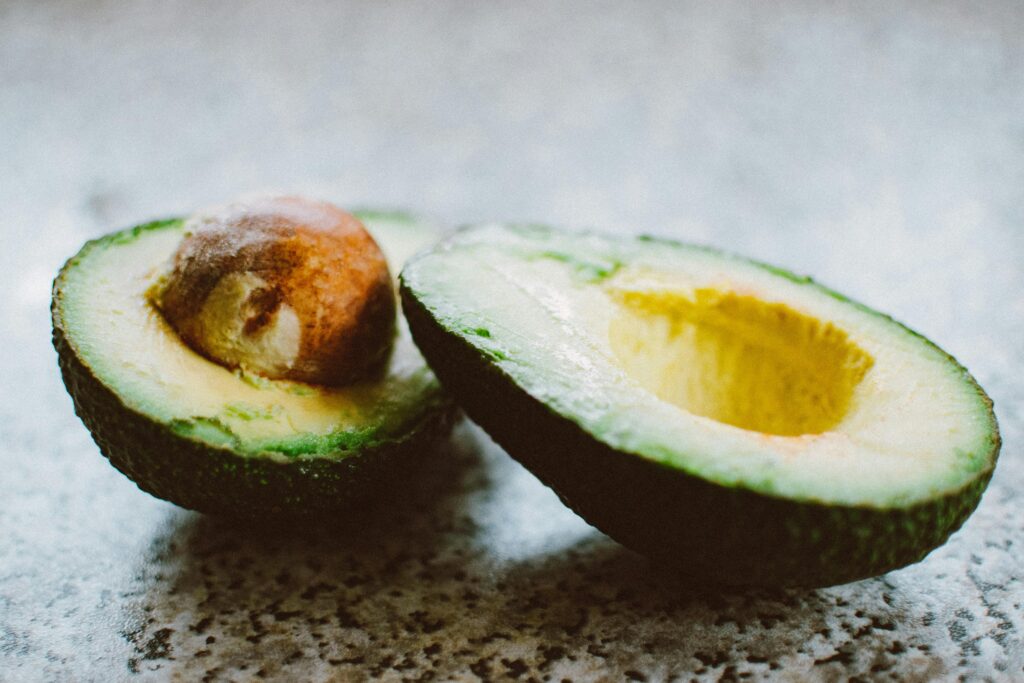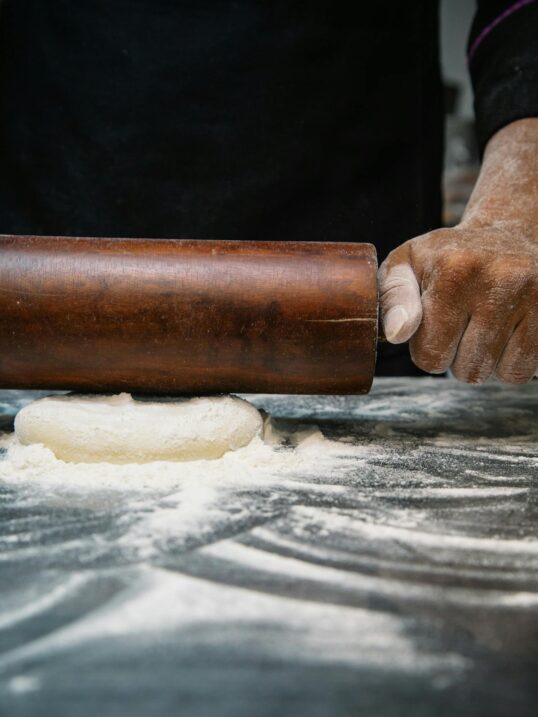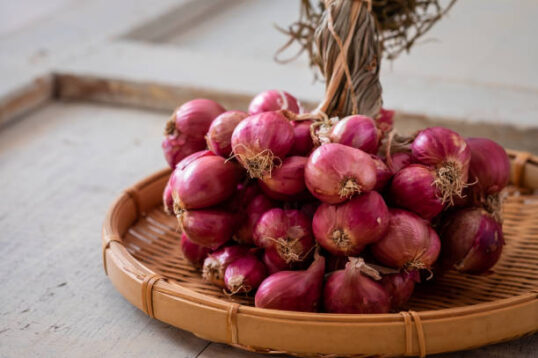If you’re staring at a rock-hard avocado and wondering how to make it soft and creamy in time for dinner, here’s a complete guide to ripening an avocado quickly, complete with science-backed methods, practical tips, and how to pick the perfect avocado in the first place.
How to Pick a Ripe Avocado
The best way to avoid dealing with unripe avocados is to choose a ripe one from the start. Here’s how to spot the perfect avocado:
1. Check the Color
- Dark Green to Black: A ripe Hass avocado will have a dark green or black exterior. If the skin is bright green, it’s likely unripe.
- Smooth vs. Bumpy: Hass avocados have a pebbly, bumpy texture when ripe, while other varieties like Fuerte may be smooth.
2. Gently Squeeze
- Hold the avocado in your palm and apply gentle pressure. A ripe avocado will yield slightly but still feel firm.
- Avoid ones that feel mushy or have dents, as they may be overripe.
3. Inspect the Stem
- Flick off the small stem nub at the top of the avocado. If the color underneath is:
- Green: The avocado is ripe and ready to eat.
- Brown: It’s overripe.
- Hard to Remove: The avocado is unripe.
4. Listen for the Seed
- Give the avocado a gentle shake. If you hear the pit rattling inside, it’s likely ripe. However, this method isn’t foolproof.
Now that you’ve selected your avocado, let’s move on to how to ripen it if it’s still too firm.
How to Quickly Ripen an Avocado
Try these tips to quickly ripen an avocado when you’re in a pinch:
1. The Paper Bag Method
One of the most reliable ways to ripen an avocado is using a brown paper bag:
- How It Works: A paper bag traps ethylene gas, a natural hormone released by fruits that speed up ripening.
- Step-by-Step: Place the avocado in a brown paper bag. Add a banana, apple, or kiwi to boost ethylene production.
- Timeframe: 1–2 days.
- Pro Tip: Keep the bag in a cool, dark place to prevent overheating or moisture buildup.
2. The Warm Kitchen Spot
If you don’t have a paper bag, warmth alone can help.
- How It Works: Warm temperatures accelerate the chemical reactions involved in ripening.
- Step-by-Step: Place the avocado in a warm area of your kitchen, such as near a sunny windowsill or close to your oven (but not on it).
- Timeframe: 2–3 days.
- Pro Tip: Rotate the avocado occasionally to ensure even ripening.
3. The Rice or Flour Trick
This method is a traditional favorite in cultures that grow avocados.
- How It Works: Rice or flour traps ethylene gas, similar to the paper bag method.
- Step-by-Step: Submerge the avocado in a container filled with uncooked rice or flour. Cover the container loosely to prevent moisture buildup.
- Timeframe: 1–2 days.
- Pro Tip: Check the avocado daily to avoid over-ripening.
4. The Oven Method (Quick Fix)
If you’re in a rush, the oven can soften an avocado in minutes.
- How It Works: Heat speeds up the breakdown of starches into sugars, softening the avocado.
- Step-by-Step: Preheat your oven to 200°F (93°C). Wrap the avocado in aluminum foil and place it on a baking sheet. Bake for 10–15 minutes.
- Timeframe: 15 minutes.
- Pro Tip: While this method softens the fruit, it may slightly alter the flavor. Use it for guacamole or blended recipes rather than raw slices.
5. The Microwave Hack
This method is a last resort, best for recipes where texture isn’t critical.
- How It Works: Microwaving softens the avocado but doesn’t ripen it in the traditional sense.
- Step-by-Step: Poke a few holes in the skin with a fork to release steam. Wrap the avocado in a damp paper towel and microwave in 30-second intervals until soft.
- Timeframe: Under 5 minutes.
- Pro Tip: The texture might become rubbery, so save this method for blended dishes.
How to Tell If Your Avocado Is Ripe
It’s easy to mistake an unripe or overripe avocado for a perfectly ripe one.
1. Squeeze Test
- A ripe avocado will yield to gentle pressure but won’t feel mushy.
- If it feels firm and doesn’t budge, it needs more time. If it’s too soft, it’s likely overripe.
2. Stem Test
- Remove the small stem nub at the top. If the skin underneath is green, your avocado is ripe.
- Brown skin indicates overripe fruit, while a stem that doesn’t come off easily signals an unripe avocado.
3. Color Test
- For Hass avocados, look for dark green or black skin. Bright green usually means the fruit is unripe.
4. Texture Test
- Run your fingers over the skin. A ripe avocado will have a slightly pebbly texture for Hass varieties, while others, like Fuerte, may be smooth.
Ripening Myths: What Doesn’t Work and Why
You might’ve heard of these common ripening myths, but they may not work as well as you thought.
1. Plastic Bags
- Why People Think It Works: Like paper bags, plastic bags trap ethylene gas.
- Why It Doesn’t Work: Plastic bags can trap moisture, creating a humid environment that encourages mold growth instead of ripening.
2. Freezing
- Why People Think It Works: Some believe freezing halts ripening and then accelerates it when thawed.
- Why It Doesn’t Work: Freezing hardens the water inside the avocado, damaging its cell structure. This stops the ripening process entirely and results in a mushy, flavorless fruit.
3. Direct Sunlight
- Why People Think It Works: Heat speeds up ripening, so direct sunlight seems logical.
- Why It Doesn’t Work: Excessive heat can cook the avocado’s exterior while leaving the interior unripe.
Insider’s Insight
Now that you know how to ripen an avocado quickly, you’ll never have to postpone your avocado toast, guacamole, or salad again. Whether you have a few days or just a few minutes, there’s a method to suit your timeline.




Leave a Reply